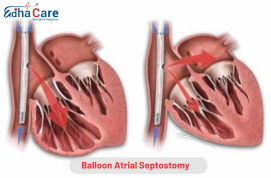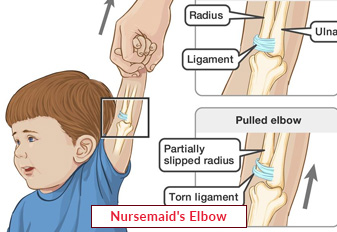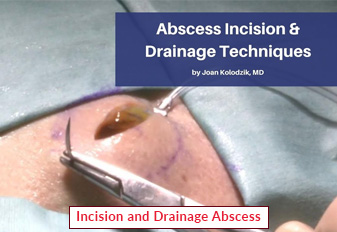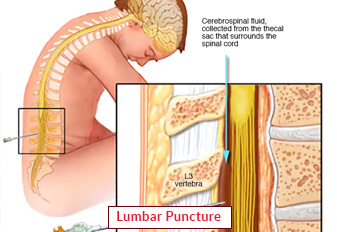Balloon Atrial Septostomy

A cardiac operation called balloon atrial septostomy (BAS) is performed to correct certain congenital heart problems, especially in newborns with severe cyanotic heart diseases. A narrow catheter with an inflation balloon at its tip is directed to the atrial septum, which is the wall separating the top chambers of the heart, via a blood artery, typically the femoral vein, during a balloon angioplasty procedure. After the balloon is in place, it is inflated, causing a condition called an atrial septal defect (ASD), which is a hole in the septum of the atrium. By allowing blood to move from the right atrium to the left atrium, this aperture raises the systemic circulation's saturation of oxygen. In order to increase oxygenation while waiting for a definitive surgical replacement, BAS is frequently used as a palliative procedure.
Book an Appointment
About Balloon Atrial Septostomy
Indications: Balloon atrial septostomy (BAS) is used to treat severe cyanosis (bluish skin pigmentation) and hypoxemia (low oxygen in the blood levels) in neonates with specific congenital cardiac abnormalities, such as transposition of the great arteries (TGA), rather than to immediately ease symptoms. Infants with these symptoms may have respiratory pain, insufficient nutrition, and lethargy.
Causes include: The presence of severe cyanotic cardiac disorders, especially those marked by insufficient mixing of rich in oxygen and oxygen-poor blood because to heart structural anomalies, like TGA or hypoplastic left heart syndrome, is the main cause of Balloon atrial septostomy (BAS).
Treatment: Before a permanent surgical repair can be carried out, balloon atrial septostomy (BAS) acts as a temporary palliative treatment to enhance oxygenation and stabilize neonates with severe cyanotic heart abnormalities. By creating a defect known as an atrial septal defect (ASD), the treatment helps temporarily alleviate hypoxemia and cyanosis by allowing blood to more easily exchange between the heart's chambers. But balloon atrial septostomy (BAS) by itself is not a cure, and more involved surgical operations are usually needed to address the root cause of heart abnormalities.
Procedure of Balloon Atrial Septostomy
Preparation: The patient, usually a newborn with severe cyanotic heart conditions, is carefully evaluated, and informed consent is obtained from the parents or guardians. The medical team reviews the patient's medical history, performs necessary diagnostic tests, and ensures readiness for the procedure.
Anesthesia: The patient is placed under general anesthesia to ensure comfort and immobility during the procedure.
Vascular Access: A thin, flexible catheter is inserted into a blood vessel, typically the femoral vein in the groin area, and guided through the vascular system to reach the heart.
Catheter Placement: The catheter, equipped with a deflated balloon at its tip, is positioned within the atrial septum—the wall between the upper chambers of the heart—under fluoroscopic guidance.
Balloon Inflation: Once properly positioned, the balloon at the catheter's tip is inflated, creating an opening in the atrial septum, known as an atrial septal defect (ASD).
Monitoring: Throughout the procedure, the medical team monitors the patient's vital signs, oxygen saturation levels, and cardiac function to ensure safety and effectiveness.
Post-procedural Care: After completing the septostomy, the catheter and balloon are carefully withdrawn, and pressure is applied to the insertion site to prevent bleeding. The patient is monitored closely in a cardiac care unit for any complications or changes in condition following the procedure. In some cases, additional interventions or surgical corrections may be necessary to address underlying cardiac anomalies.
Require Assistance?
Get A Quick Callback From Our Healthcare Experts
Other Specilities We Cover

Nursemaid's Elbow Treatment

Incision and Drainage Abscess




